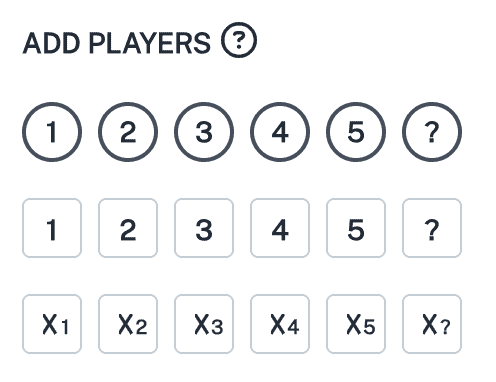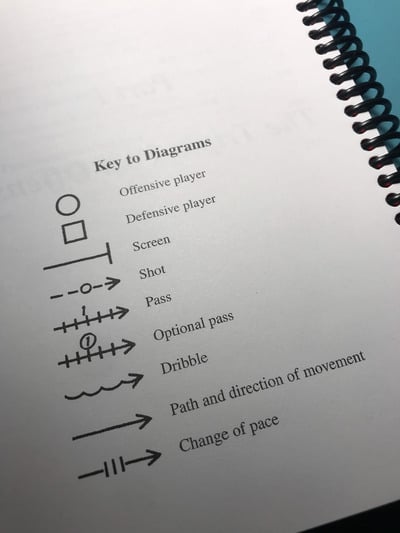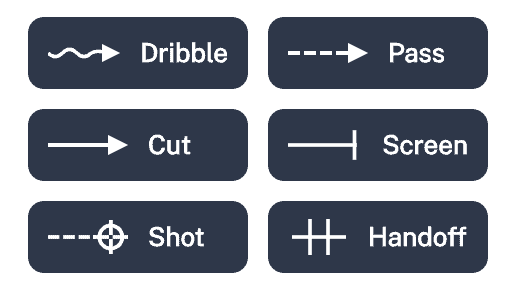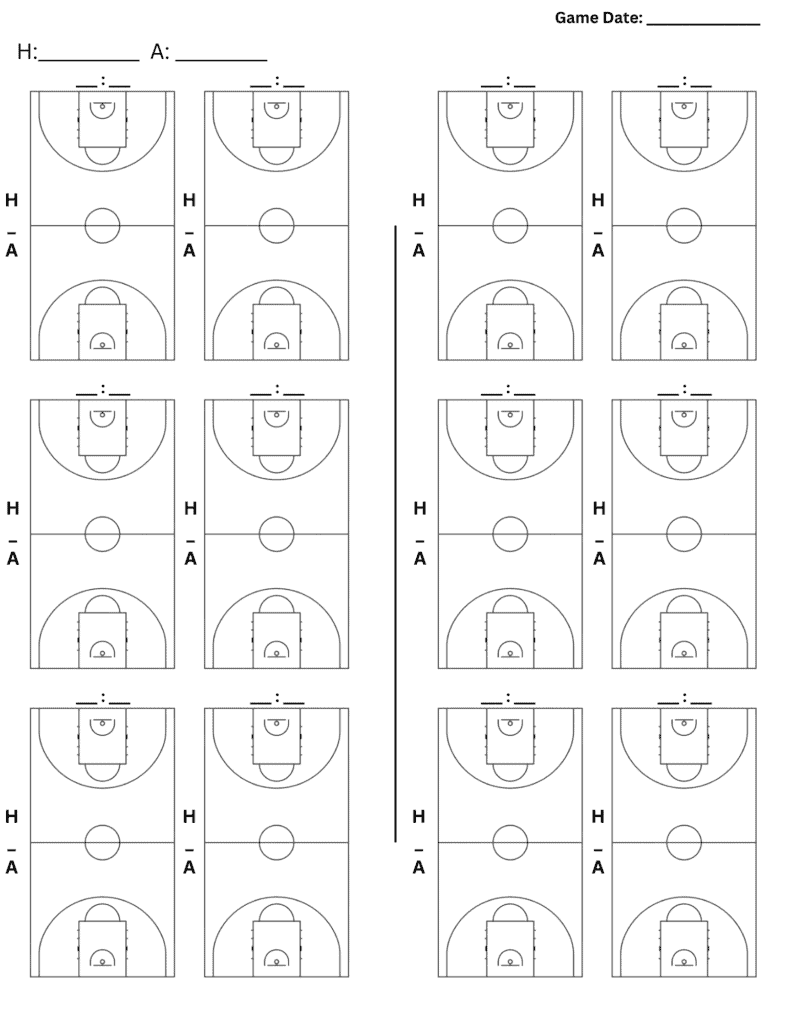When you make a purchase through links on this post, we may earn a commission through Amazon or other retailers. Learn more about our affiliate disclaimer.
Basketball play diagrams are the language of basketball strategy. When used effectively, they can convey complex basketball concepts with extreme efficiency.
Once you have a basic overview of basketball strategy under your belt, you might be interested into digging into some more detail. And as soon as you start looking into plays, coaching philosophies, or even basketball drills, you’re going to need to learn how to read basketball play diagrams.
It is far easier and clearer to communicate a basketball play with a drawing than with words. That’s helpful on the court. But it’s even more helpful in the lab. It takes time to watch video and decode the movements. You can scan through play diagrams a lot quicker.
So this post covers all of the basic symbols you need to know as you learn how to read basketball play diagrams effectively. This will help you study basketball strategy and learn or understand new plays easily.
Reading Basketball Play Diagrams
Specific notations can vary from source to source. Having sifted through far too many books on basketball strategy to count, I’ve come across all kinds of weird little symbols.
Point being, just don’t expect this to be universal and complete.
But we can cover the most important notations easily. Knowing the main symbols used in basketball play diagrams, you can usually sort out any anomalous symbols that a specific strategist may choose to employ.
Player Symbols
You should first take note of player markings. Numbers denote the traditional position being played. Running in order from 1 to 5: point guard, shooting guard, small forward, power forward, center.
Not all diagrams will reference positions like this. When a coach is delivering a clipboard concept, shorthand, in the middle of a game, the numbering isn’t really important. But when studying plays, if numbers are present, they convey important information.

Offensive players are designated by that number corresponding to their position. Defenders appear as an ‘X’ with the corresponding position number as a numeric subscript. The ball handler is often circled.
The image here is taken from the TheHoopsGeek.com play creator. The tool is free to play with, and it can be a good way to learn to read basketball play diagrams.
Movement Symbols
Movement is conveyed through various line styles. A line of any style which terminates in an arrow indicates continued movement.
There are typically three line styles to be aware of. Straight lines indicate player movement. Dashed lines indicate ball movement (i.e. a pass). And wavy or jagged lines indicate dribbling.
Whether you use jagged or wavy lines to indicate dribbling is mostly up to the tactician. In a pinch, all play movement is often just simplified to solid lines.

Pictured to the right is the legend from The Triple-Post Offense by Tex Winter. It’s a funny example of the types of random symbols that can pop up in different diagrams.
In this book, Tex includes notation for optional passes, as well as notation designating a change of pace. He also uses a circle on a pass line to mark a shot attempt, which is not standard. And he uses squares to represent defenders.

Perhaps more standard, the legend for the play creator at thehoopsgeek.com uses a little target for shot attempts. And they include a special notation for a dribble-handoff.
In some rare cases, a dashed line indicating a pass will have hash marks placed in the middle. The number of hashes in this usage designates the order in which the passes are performed.
Action Symbols
Certain symbols placed on or at the terminal point of a line will convey various actions. An arrow is the most common terminal symbol, and it indicates that movement should simply continue along the same path.
But there are 3 other symbols that convey important information.
When a line of movement ends in a target, that indicates a shot attempt. The player should stop at that designated point and put up a shot.
Two parallel lines, placed perpendicular to a line of movement, indicates a dribble handoff. The ball handler should dish the ball off on a bounce to a nearby teammate at that position.
The last symbol is likely the most common symbol you will encounter. A single line, perpendicular to the line of movement, indicates a screen. A player, as they are cutting, should lay down a screen at that position on the court.
Blank Basketball Court Diagrams
As a way to better understand basketball, I often like to draw out plays by hand from notable games. It’s just a way to force myself to play extra attention to the game and the play progression. It can be really fascinating to spot adjustments as they are made in game situations.
If you need a diagram, this is the one I use. I found that I had to design these myself because no existing template really matched the size of diagram and the number of courts per page I was looking for. Plus I added some labeling for possession and points and game title and such.
Takeaways
When you see a coach scribbling on the sidelines, it makes this stuff seem a little daunting. but in reality, those lines are really quite simple and learning to read basketball play diagrams is quite simple. I hope this knowledge helps you on your journey towards understanding the game of basketball on a whole new level.

